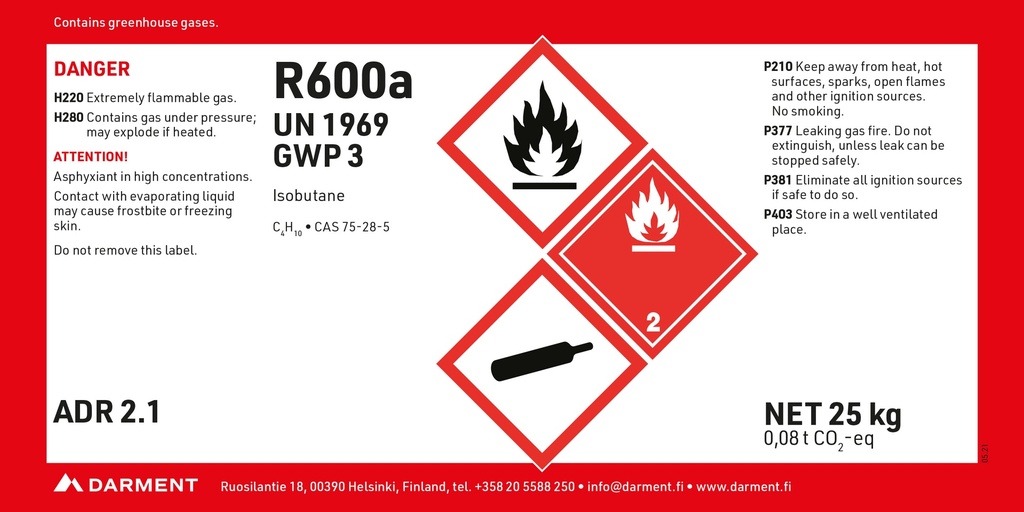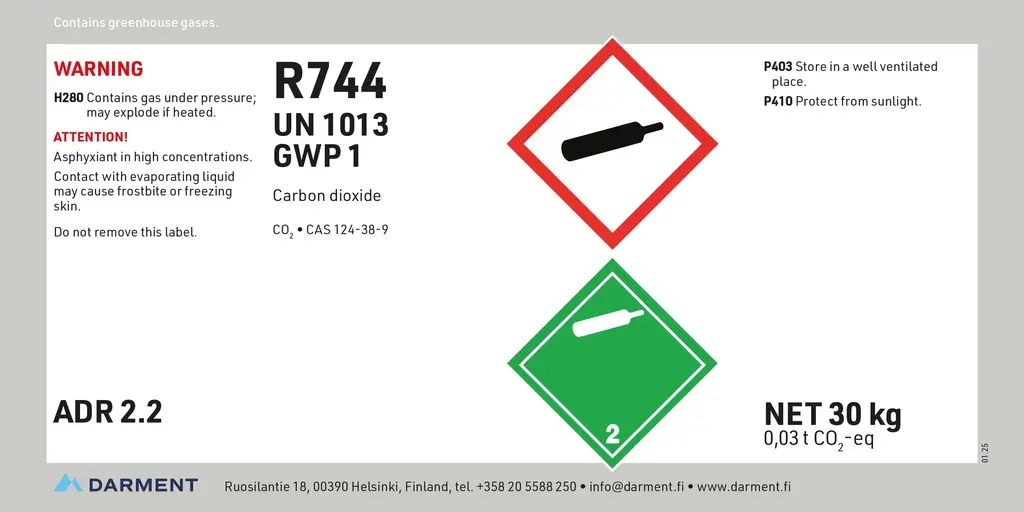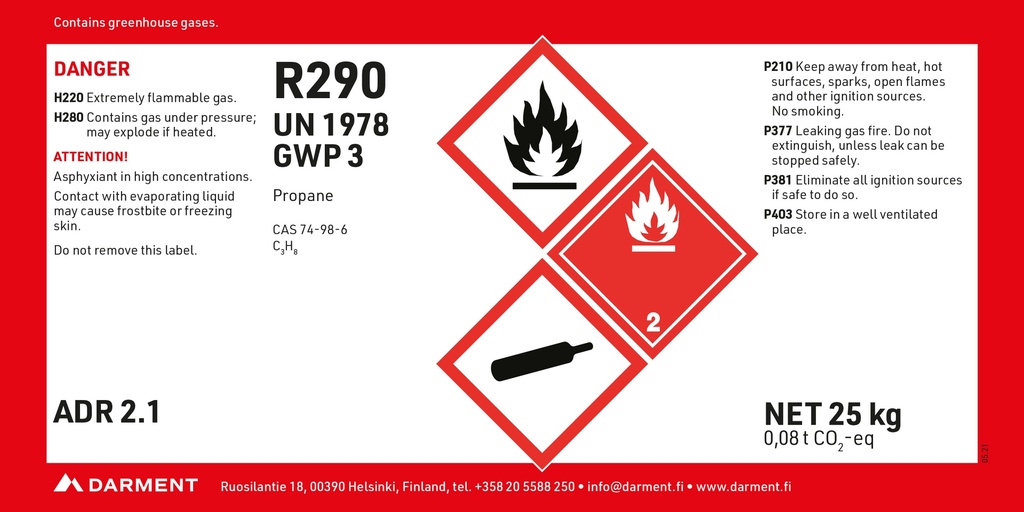
Natural refrigerants
Cooling with nature's own ingredients.
What are natural refrigerants?
Natural refrigerants like carbon dioxide, hydrocarbons, and even plain air have been part of cooling technology for over a century. Now, as the industry moves away from high-GWP synthetic refrigerants, natural options are gaining ground for a simple reason: they’re effective, efficient, and better for the environment.
Natural refrigerants are substances found in nature that can be used for cooling without the environmental trade-offs of synthetic alternatives. Unlike HFCs or HFOs, they significantly contribute to global warming. In fact, many of them have a GWP (Global Warming Potential) of 1—or even zero.
Natural refrigerants include carbon dioxide (R‑744), propane (R‑290), isobutane (R‑600a), ammonia (R‑717), water (R‑718), and air (R‑729). Each has its own strengths and ideal applications, but they share a common trait: they align with the future of sustainable cooling.
A closer look at the key natural refrigerants
R744 Carbon dioxide
Once widely used in the early days of refrigeration, carbon dioxide is experiencing a resurgence. It’s non-toxic, non-flammable, and has a GWP of just 1. Today, CO₂ is used in everything from supermarket refrigeration to heat pumps and pharmaceutical storage. While it requires systems designed for high pressure, its environmental benefits and performance are hard to ignore.
Note: Due to high pressure, R‑744 cylinders have special handling and return requirements. The rental terms for CO₂ cylinders differ from those of other refrigerants. A rental fee of €0.50 per day will be charged after a 14-day free loan period.
R290 Propane
Highly efficient and naturally occurring, propane is one of the most promising alternatives to synthetic refrigerants in domestic and light commercial applications. It has an excellent cooling capacity and a very low GWP, but due to its flammability, system design and safety standards are critical.
R600 n-butane
R600, or n-butane, is the structural isomer of R600a. Although it is less commonly used, R600 offers similar advantages: excellent thermodynamic performance, low energy consumption, and a low GWP of around 4.
R600 is suitable for household appliances, professional kitchen refrigerators and freezers, and certain industrial cooling systems where specific temperature and pressure characteristics are required. Like other hydrocarbon refrigerants, it is classified as flammable (A3) and must be handled with proper safety precautions.
Safety and charge limitations:
• Max. charge without special restrictions: under 150 g
• EN60335-2-89 standard allows up to 494 g in qualified equipment
R600 can replace traditional HFC refrigerants such as:
• R134a
Shop
R600a Isobutane
R600a, also known as isobutane, is an isomer of butane and one of the most commonly used natural refrigerants today. It is highly energy-efficient, has an ultra-low Global Warming Potential (GWP ≈ 3), and contains no ozone-depleting substances. Its excellent compatibility with various lubricants makes it suitable for a wide range of refrigeration applications.
R600a is especially known for its use in household refrigerators and freezers, but it also plays a role in beverage coolers, dehumidifiers, aerosol sprays, and petrochemical production. In the food industry, isobutane is classified under E-code E943b, where it is used as a packaging gas and propellant.
Alternative refrigerants / replacements for R600a:
• R290 (propane)
• R1270
• R134a
Other natural options
Ammonia (R‑717) is still a top choice for large industrial applications due to its outstanding thermodynamic performance, but it requires careful handling due to its toxicity. Water (R‑718) and air (R‑729) also offer interesting opportunities, especially in niche systems like absorption cooling or ultra-low temperature processes. However, their use is still relatively limited compared to CO₂ and hydrocarbons.

The future is natural
Switching to natural refrigerants is not just a regulatory move — it’s a strategic one. They offer long-term viability in a tightening legislative landscape, and when properly implemented, they can even lead to energy savings and lower life cycle costs.
Whether it’s for domestic appliances, commercial freezers, industrial processes, or ultra-low temperature pharmaceutical applications, there’s a natural solution ready to meet the challenge.






